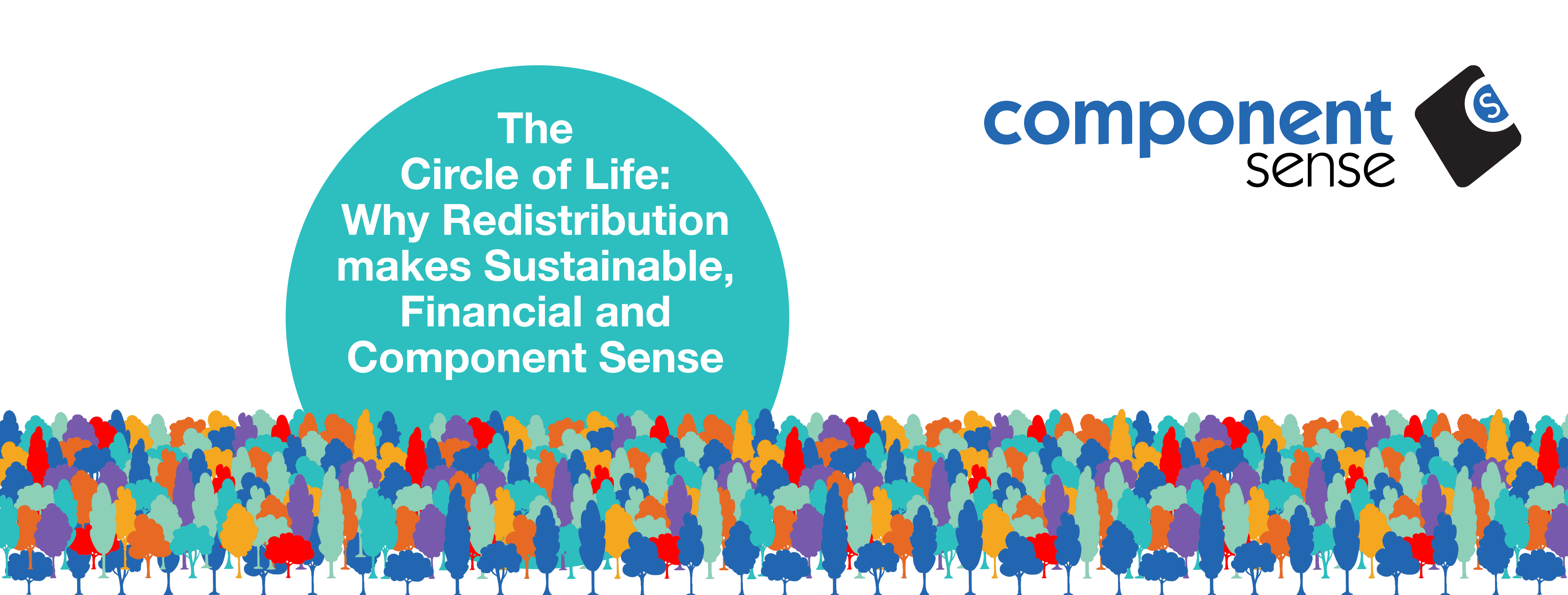Why Redistribution Makes Sustainable, Financial, and Component Sense

The ways in which electronic components and their metals are treated by human economies are similar to our understanding of the linear process of life: birth, life, and death. First, elements are mined to bring life to electronic devices. Then, when the outer shell no longer works, components end their existence as electronic waste (e-waste) in one of the world’s landfills.
When applied to finite resources, however, the human understanding of a life span fails. First, the premise of reproduction is different, as there is no unlimited access to these metals. Secondly, whilst electronic devices have a life span, the components and elements used to build them do not. This means that millions of tonnes of electronic components end up in landfills each year, where they pollute air and water supplies.
The traditional way of mining elements and metals contains two steps: mining and smelting metal ore. Sticking to our metaphor of a life span, these two steps combine to represent the linear economy model of “take-make-dispose”.
However, electronic components cannot be fully disposed of. Instead, they are destined for one of two fates:
- Landfill: where they represent the loss of great financial potential and release polluting toxins.
- Incineration: further pumping pollution into the atmosphere.
These two disposal options are not only damaging to the environment but represent huge financial losses Since electronic components contain precious metals, iron, aluminium, or reusable plastic, the United Nations University “estimates that the resource perspective for secondary raw materials of e-waste is worth €55 billion of raw materials.” In other words, unused components are a waste of financial opportunity. This means that adopting a circular economy for electronic component metal mining is not only more environmentally friendly but it makes financial sense too!
Circular economies challenge our knowledge of economic processes. While the traditional market follows a linear understanding of use and distribution, circular economies rely on the principle of reuse. Within the electronics industry, a circular economy would mean that products are redistributed, reused, and recycled to slow the mining process of finite metals. Redistribution, then, becomes a new resource! Excess and obsolete (E&O) electronic component stock (which might otherwise have been overlooked by manufacturers) represents an important element of the supply chain. This is why we at Component Sense have chosen to specialise in E&O redistribution!
Circularity aims to keep the once-mined and smelted metals in the production loop for as long as possible (through redistribution and recycling). This is why adopting a circular economy is attractive to many within the manufacturing industry. A common response to the demand for a circular economy in electronics is urban mining.
Urban mining regards e-waste as a resource, not as an end product. Rather than disposing of old electronics, urban mining dissembles and separates devices for further use. In the AIDR research project by Dr Fricke-Begemann, for example, scientists have created a machine that automatically separates old electronic devices into their reusable parts. These components are then sorted by material, which reduces time and labour costs. Ultimately, these machines could replace smelting factories by making urban mining more efficient and sustainable!
Many have also recognised the financial potential of e-waste. As most components contain precious metals, the sheer mass of discarded parts represents billions of dollars of wasted profit. To enable the sustainable switch, governments are being called upon to promote circular economies and support a better system of processing e-waste. Currently, manufacturers are obligated to cover the costs of recycling their components. A further step could be for OEMs and EMSs to strive for optimised designs that support the dissembling and reuse of electronic components.
Urban mining is one example of how circular economies can support the electronic market. Other companies that do not deal with e-waste directly can also encourage the change towards circular economies. At Component Sense, for example, our business model works to support a more sustainable electronic component market. By dealing exclusively with excess and obsolete components, we actively reduce the number of components (a) being manufactured and (b) being disposed of. Due to our tier-one company partnerships and our rigorous quality control processes, we can guarantee high-quality, traceable components that might otherwise have ended up in a landfill.
Ultimately, the electronics industry must strive to become more circular. This new approach to economic thinking will lead to growth, new jobs, and business opportunities if the market is willing to answer to the urgent need for environmental sustainability. Since e-waste contains high material and financial value, redistribution and recycling are promising bases for economic growth.
Climate change and climate-related legislative changes are inevitable. The electronic industry would therefore be wise to plan and prepare for future changes and to shape its own market rather than be confronted with changes. Component Sense can help electronic manufacturers take the first step towards zero waste. If you want to reduce your excess and make your company more sustainable, do not hesitate to get in touch!
To read more about Component Sense’s environmental activities, click here. Alternatively, you can email us if you have any specific questions: marketing@componentsense.com
